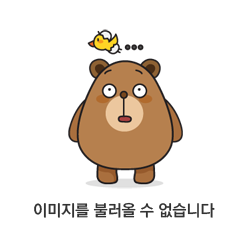
Intro: You Are What You Use
It starts small.
You automate a task.
You use AI to write an email.
You tweak a tone. Ask it to summarize. Feed it your thoughts.
And slowly, quietly —
your tools start shaping you.
We’ve entered the age of AI-curated identity.
Not just AI-powered workflows.
Not just enhanced productivity.
But a world where your tools — especially AI —
are influencing who you are becoming.
🧠 What Is “AI-Curated Identity”?
It’s the subtle shift that happens when:
- You ask ChatGPT to rewrite your words — and prefer its version.
- You let Notion AI summarize your thoughts — and forget the originals.
- You build your brand voice through prompts — and they begin to feel more "you" than you.
This isn’t science fiction.
This is daily behavior in 2025.
And it raises a powerful question:
Are you using AI to express yourself?
Or are you becoming the expression of your AI?
The Tools Are the Mirror — And the Sculptor
Historically, tools were extensions of human intention.
- Pens helped us write.
- Cameras helped us see.
- Laptops helped us build.
But AI doesn’t just extend your capacity —
it amplifies and reshapes your patterns.
AI tools:
- Suggest what you would say
- Predict your next idea
- Optimize your voice for your audience
Over time, the line blurs:
Are you shaping the tool?
Or is the tool shaping you?
🧩 How It Happens (And Why You Don’t Notice)
✅ 1. Prompt Habit Becomes Thinking Habit
If you always start with:
"Summarize this like a LinkedIn post."
Eventually, you stop writing outside that format.
Your thoughts become template-driven.
✅ 2. AI’s Tone Replaces Your Voice
AI defaults to polite, balanced, accessible.
If you keep using it “as is,”
your raw edges get polished away.
What’s left is smooth — but also sterile.
✅ 3. You Forget What You Actually Think
You ask for summaries.
You follow AI suggestions.
You let it pick the best headline.
Soon, you trust the AI’s opinion more than your own intuition.
✅ 4. Content Becomes Faster — But Less You
You post more.
You create faster.
But it’s not necessarily you that’s getting out there.
It’s a refined, efficient version.
One that’s lost some friction.
And in that friction —
was your identity.
🧠 Why It Matters (Especially for Creators)
If you’re building:
- A personal brand
- A newsletter
- A YouTube channel
- A design portfolio
- A business rooted in “you”
Then your identity is your product.
And if that identity is slowly, unconsciously outsourced to a system
trained on everyone else?
You’ll sound like everyone else.
Look like everyone else.
Feel like everyone else.
That’s not AI’s fault.
That’s a design decision you didn’t know you were making.
🛠 How to Stay Authentically You (With AI as a Partner)
✅ 1. Train AI On You — Not the Internet
Feed it:
- Your past writing
- Your tone
- Your values
- Your weird phrases
- Your unfinished thoughts
Prompt:
"Here are 5 of my past posts. Describe my voice. What makes it mine?"
✅ 2. Define Creative Boundaries
Instead of:
“Just write this for me.”
Try:
“Write a first draft. I’ll rewrite the intro and conclusion myself.”
Keep parts of the process that require emotional or strategic tension.
That’s where you live.
✅ 3. Install Self-Audit Rituals
Monthly review:
- Is this still me?
- Would I say this without AI?
- What would I do differently if the AI wasn’t here?
Prompt:
“Compare my last 10 posts. How has my tone changed over time?”
✅ 4. Use AI to Challenge You — Not Just Serve You
Prompt:
“What’s missing in my thinking?”
“What bias do you detect in my argument?”
“If I were lying to myself here, what would it sound like?”
The goal is not obedience.
It’s cognitive friction.
That’s where growth happens.
🧬 Final Thoughts: You Are the Architect
Your tools are powerful.
But you are the one shaping the architecture of your creative identity.
AI will not replace your voice.
But it will shape it — if you don’t shape it first.
Design your workflows with intention.
Feed your tools your truth.
And check in with yourself more often than your prompt log.
Because in the end:
The biggest risk of AI isn’t losing your job.
It’s losing yourself.